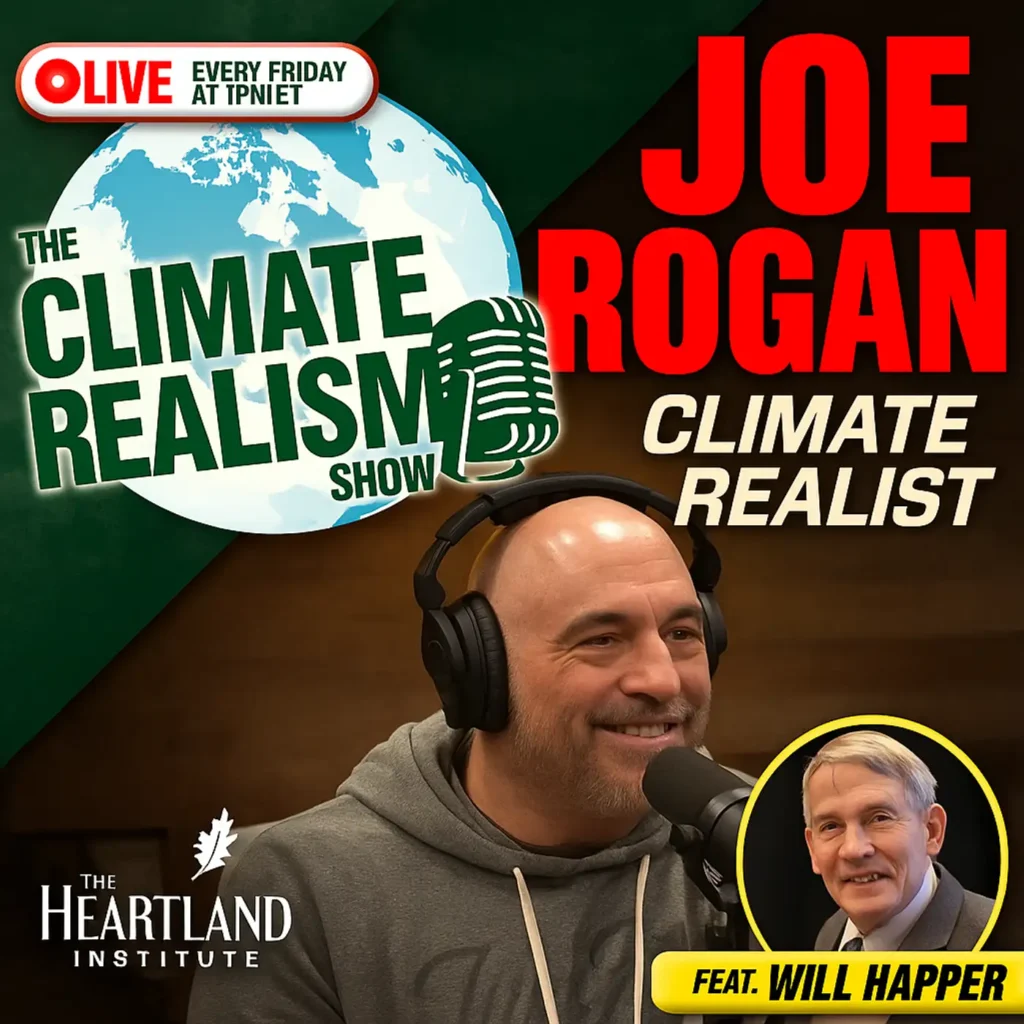A new report from the American Consumer Institute (ACI) details, for all their touting as “green” sources of energy, wind and solar powered electricity generation is much more environmentally harmful than most people realize.
The report, Clearing the Air: Honest Truths about Clean Energy, details the environmental hazards during the production processes of these green energy sources, their effects on land use and the problems of waste in their disposal processes, as well as other environmental problems that arise from them.
Wind turbines, for example, comprise mostly steel and concrete, which have “high embodied carbon emissions due to their manufacturing processes…. Steel and concrete in general are the greatest contributors to [greenhouse gas (ghg)] emissions. The World Economic Forum acknowledges that the steel industry contributes 7-9 percent of global man-made ghg emissions. Obviously, massive increases in wind turbines will greatly increase steel’s overall contribution to emissions.”
The amount of land needed for wind turbines is also a serious concern. “Some estimates say that wind generation will increase 570 percent between 2023 to 2050, from just under 500,000 [gigawatt hours (GWh)] to 3.3 million GWh. Since [the National Renewable Energy Laboratory] projected a potential 250,000 turbines, and each turbine requires roughly 55 acres minimum, that could be close to 14 million acres. That’s almost the entire state of West Virginia.”
The fiberglass turbine blades are also nearly impossible to recycle, with the result being projections of approximately seven million tons of turbine blades, between 3,000 and 9,000 blades each year for the next five years, and between 10,000 to 20,000 blades by 2040, will be hauled off to landfills.
The report also notes their deadly effect on wildlife. Up to 328,000 birds and 880,000 bats are killed annually by turbine blades, and these numbers will only rise with the increase in turbine capacity.
Solar facilities present their own unique dangers. The manufacturing of solar panels involves dangerous toxins such as nitrogen trifluoride (NF3) and sulfur hexafluoride (SF6), which are 17,200 and 23,000 times more potent than carbon dioxide (CO2).
“A 2020 study showed the annual emissions rate of SF6 rose from about 7.3 gigagrams (Gg) in 2008 to about 9.04 Gg in 2018, a 24 percent increase in just one decade,” the report notes. “For reference, nine Gg of SF6 equates to ghg emissions of approximately 44 million passenger vehicles driven for one year, or 226 billion pounds of coal being burned.”
Land use is also a considerable concern with solar facilities, as the report notes the Bureau of Land Management has proposed setting aside up to 22 million acres of public land for solar farms, which is “roughly equivalent to the size of Maine or an area larger than Scotland.”
Further, the report adds, “the solar industry is also unfortunately tainted by forced labor camps of Uyghur Muslim minorities in Xinijang, China, where approximately half of global polysilicon is produced. This type of slaved encampment tarnishes the very idea of clean energy; human rights abuses are a stain on any enterprise, regardless of the purported benefits the commodities might have.”
Finally, the report goes into detail about the environmental concerns with electric vehicles (EVs), the batteries for which use extensive amounts of lithium, cobalt, nickel, graphite, and copper, and the supply chain for which is dominated by China.
“A typical EV battery weights 1,000 lbs,” ACI notes. “Collectively, 90,000 lbs of rock/ore are involved just to extract the amount needed for one battery. But to access each ton of ore, anywhere from 3 to 20 tons of earth must be removed. This averages out to about 500,000 lbs of earth removal per car battery.”
In the Democratic Republic of the Congo (DRC), which contains over half of the world’s known supply of cobalt, ACI points out that “entire displaced populations are forced to dig [for cobalt] with their bare hands for a few dollars a day because they are left with no alternative after their villages have been demolished. Human trafficking and child labor are rampant; an estimated 25,000 children work in DRC mines. Cobalt is toxic to the touch and the fumes permeate the air and water supply. Tens of thousands, including young children, die or lose limbs from collapsing tunnels. Just like the Uyghur camps taint the solar industry, these human rights violations tarnish the EV supply chain.”
“The realities of ‘green’ energy technologies are that they come with some significant environmental impacts that cannot and should not be ignored,” the report concludes. “The procedures to extract and process the various elements involved in creating wind, solar, and EV batteries are intensive and in many cases, quite damaging. All three require massive quantities of minerals and/or raw materials, which generally consume enormous amounts of energy and land. Some have the added liability of human capital. Not only are toxins and greenhouse gases released but the earth is forever changed through mineral harvesting, land use, and waste (mis)management. Soil and water sources once corrupted may never recover. Worse yet, lives are forever changed. It doesn’t seem right to taint water supplies, confiscate land, or encourage slave labor at the whims of clean energy advocates. It may not be happening in your backyard, but somebody else is paying the price, often in faraway lands.”
The following documents provide more information about “renewable” energy sources.
Clearing the Air: Honest Truths about Green Energy
https://www.theamericanconsumer.org/wp-content/uploads/2024/07/Clearing-the-Air.pdf
This report from the American Consumer Institute details many of the environmental impacts associated with the so-called green energy forms being heavily promoted. The life cycle of all three—the wind turbine, solar panel, and EV battery—involve significant environmental consequences that should not be overlooked and need to be part of the discussion when implementing energy policies.
Policy Brief: How the Green New Deal’s Renewable Energy Mining Would Harm Humans and the Environment
https://heartland.org/wp-content/uploads/documents/PBdriessenmining2Apr20.pdf
In this Heartland Institute Policy Brief, Paul Driessen, senior policy advisor with the Committee For a Constructive Tomorrow, argues expanding mining on the scale needed to meet the renewable energy requirements contained in the Green New Deal and other proposed renewable energy mandates would cause unimaginable harm to the environment, wildlife, and humans.
Policy Brief: Protecting the Environment from the Green New Deal
https://heartland.org/wp-content/uploads/documents/EnviHarmsPB.pdf
This Heartland Policy Brief by Paul Driessen, senior policy advisor with the Committee for a Constructive Tomorrow, reviews the largely ignored environmental damage that would result from the expanded use of renewable energy mandated under the Green New Deal.
The 100 Percent Renewable Energy Myth
https://www.instituteforenergyresearch.org/wp-content/uploads/2019/02/Renewable-Myth-Policy-Brief219.pdf
This Policy Brief from the Institute for Energy Research argues that a countrywide 100 percent renewable plan would put the U.S. economy in jeopardy. The brief investigates the intermittency, land requirements, capacity factors, and cost of transition and construction materials that limit the ability of the U.S. to adapt to 100 percent renewable energy.
Nothing in this Research & Commentary is intended to influence the passage of legislation, and it does not necessarily represent the views of The Heartland Institute. For further information on this subject, visit Environment & Climate News, The Heartland Institute’s website, and PolicyBot, Heartland’s free online research database.
The Heartland Institute can send an expert to your state to testify or brief your caucus; host an event in your state; or send you further information on a topic. Please don’t hesitate to contact us if we can be of assistance! If you have any questions or comments, contact Heartland’s Government Relations department, at [email protected] or 312/377-4000.




